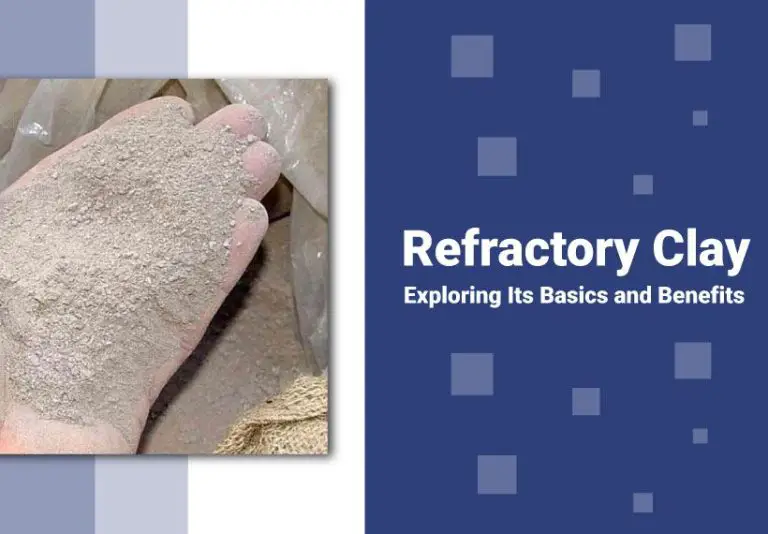What Is Clay Cracking?
What is Clay Cracking?
Clay cracking is the formation of cracks and fissures in clay or ceramic pieces as the clay dries and shrinks. It occurs because clay shrinks as it loses moisture during the drying process. The shrinkage can create stresses in the clay that lead to cracks and fractures.
As clay dries, the water molecules between the individual clay particles evaporate, causing the clay to shrink in volume. Different areas of a clay piece can dry at different rates, leading to uneven shrinkage. This uneven shrinkage results in stresses between dried areas and areas still drying. When these stresses exceed the strength of the clay body, cracks form (Source 1).
Essentially, clay cracking happens because pottery or ceramics made with clay are brittle in their dried state. The stresses from the non-uniform shrinkage during drying exploit this brittleness, forming cracks and fissures in the clay.
Causes of Clay Cracking
Clay cracking occurs due to the shrink-swell nature of clay soils. When clay soils lose moisture, they shrink, causing cracks to form. There are several factors that can lead to moisture loss in clay soils:
Hot, dry weather causes clay soils to dry out and shrink dramatically. During periods of drought or excessive heat, deep cracks are likely to appear as moisture evaporates from the soil. Dry winds can worsen soil drying.
Poor drainage also promotes cracking in clay soils. If water cannot drain properly through the soil, pockets of excessive moisture will form when it rains. Then when dry weather resumes, these wet areas rapidly dry out and shrink compared to the surrounding soil.
Tree roots take up moisture from the soil. Soils with heavy vegetation are prone to develop cracks, as roots absorb water and cause localized drying around the root zones. Areas near large trees typically exhibit pronounced cracking.
Types of Cracks
There are a few main types of cracks that can form in clay soils:
Hairline cracks are very thin cracks that tend to form during the early stages of soil drying. These cracks are usually less than 1 mm wide and don’t pose a major issue for the soil structure (Wei et al. 2020).
Large jagged cracks form as the soil continues to dry out. These cracks can extend deep into the soil profile, often 10 cm or more. The cracks have an irregular pattern and provide pathways for water loss and root damage (Hortau 2021).
Crazing refers to a network of shallow fine cracks that create a patterned texture on the soil surface. Crazing usually indicates a clay-rich soil that is going through cycles of swelling and shrinking (Hortau 2021).
Effects of Cracking
Clay soil cracking can lead to several issues for homes and structures. Some of the main effects of cracking include:
Damage to foundations and walls – As clay dries and shrinks, it can cause foundations and walls to settle unevenly. This differential settlement puts stress on the structure, leading to cracking and damage. Repeated cycles of shrinking and swelling can worsen cracks over time. According to this source, foundation damage from expansive soils costs U.S. homeowners over $15 billion annually.
Trip hazards – Large cracks in the soil can create trip hazards, especially if they run across sidewalks, driveways, or patios. Cracks wider than 1 inch are considered safety hazards. Tree roots can also push up through soil cracks, creating additional tripping risks.
Allows water intrusion – Cracks create direct channels for water to flow down and penetrate a home’s foundation. This can lead to flooding, erosion, basement seepage, and damage from freeze-thaw cycles. According to Kansas State University, improper surface drainage accounts for over 90% of wet basements.
When Cracking Occurs
Clay soil cracking typically occurs during the summer months when high temperatures cause the soil moisture to evaporate rapidly. According to Johnson County K-State Research and Extension, the increased evaporation causes the clay soil to shrink and crack. Cracks are also common after heavy rains, as the soil swells with moisture absorption and then shrinks again as it dries out.
Removing trees near a clay foundation can also lead to cracking issues. Tree roots help absorb excess moisture in the soil. Once they are gone, moisture levels can fluctuate more rapidly. This wet-dry cycle causes the clay to expand and contract, resulting in cracks.
Preventing Cracks
There are several methods that can help prevent cracks from forming in clay soil:
Watering – Providing consistent moisture to clay soils is key. Watering at the drip line of trees and shrubs encourages deeper root growth. During dry periods, aim to water 1-2 times per week.
Drainage – Improving drainage allows excess moisture to flow away from clay soils. Install French drains or grade the yard to direct water away from the house.
Add organic matter – Mixing in 3-4 inches of compost or other organic materials creates voids in the soil for better aeration and drainage. Over time this can help clay be less prone to cracking.
Tree protection – Young trees are especially prone to root damage from shrink-swell conditions. Use tree wraps or breathable tree guards to protect thin bark. Mulch around trees to moderate soil moisture and temperature.
Properly maintaining soil moisture is the best line of defense against cracks. Enhancing drainage, adding organic content, and protecting trees also helps prevent expansive clay problems.
Fixing Cracks
Cracks in soil can be unsightly and hazardous, but there are ways to fix them.
One method is to rake the soil to loosen it and then tamp or roll it to compact it again [1]. This levels the surface area and closes minor cracks. For larger cracks, fill them gently with a suitable topsoil mixture, lawn patching product, or sand [2]. Tamp the fill material and reseed the area. Water regularly to help the grass establish.
Installing a moisture barrier like landscape fabric can help stabilize moisture levels in the soil [1]. Organic compost or humus will increase nutrient and water retention. For extreme cases, chemicals or soil stabilizers can be applied per product instructions.
With proper soil treatment and consistent watering, most cracking issues can be remedied. Severe cracking may require the expertise of a landscaping professional.
Living with Cracks
For many homeowners, living with some cracking in clay soil is unavoidable. While major cracks can lead to structural issues, minor cracks may be monitored and repaired as needed. Here are some tips for living with minor cracking:
Monitor cracks closely, especially after periods of heavy rain or drought. Measure crack width and note any changes. Rapidly widening cracks may indicate a more serious issue. Take photos over time for comparison.
Use flexible materials like caulk or elastomeric paints for temporary crack repairs. These can fill cracks and expand/contract with the soil. However, these are not long-term solutions and cracks will likely reappear.
Incorporate organic matter like compost into landscape beds near the foundation. This can help absorb moisture and reduce wide swings in soil moisture levels. Avoid large trees/shrubs near the foundation.
Consider decorative solutions like gravel, stone or plants around cracks to minimize the visual impact. However, don’t hide major cracks that need structural repair.
Install drainage systems to divert water away from cracked areas. Make sure downspouts and gutters move water at least 5 feet from the foundation.
When to Call a Professional
There are certain situations when it’s best to call a professional to assess and repair clay cracking rather than trying to fix it yourself:
- Cracks wider than 1/2 inch – Large cracks may indicate a more serious underlying issue that requires professional expertise to properly diagnose and repair.
- Cracks near the foundation – Cracks in walls or floors near the foundation can affect structural integrity and should be evaluated by a professional.
- Ongoing cracking issues – If cracks reappear shortly after repairing them yourself, it likely indicates an ongoing problem that needs professional assessment.
Professionals like structural engineers, foundation repair specialists, or general contractors have the proper tools and knowledge to determine the root cause of persistent, large, or foundation-related cracks. They can then provide long-term solutions to stop the cracking from reoccurring. Don’t hesitate to call in a professional when cracking is extensive or may undermine the structure.
Long-Term Solutions
There are several long-term solutions that can help prevent future cracking and stabilize the soil around foundations:
French Drains
French drains can redirect water away from foundations and prevent soil saturation. They consist of trenches filled with gravel that lead to a discharge area. Water seeps into the gravel, flows through the pipe, and empties away from the house.
Regrading the Yard
Regrading involves reshaping the terrain around the house so that water flows away from the foundation. This prevents puddling and directs moisture away from vulnerable areas.
Retaining Walls
Retaining walls hold back earth and prevent soil erosion near the foundation. They can be made of various materials like concrete, blocks, or wood. Retaining walls prevent soil movement that causes cracking.
Soil Stabilization
Adding supporting materials like gravel or geosynthetics can stabilize and reinforce soil. Compacting soil and filling voids also helps prevent shifting. Stabilizing soil reduces movement that leads to foundation issues.




